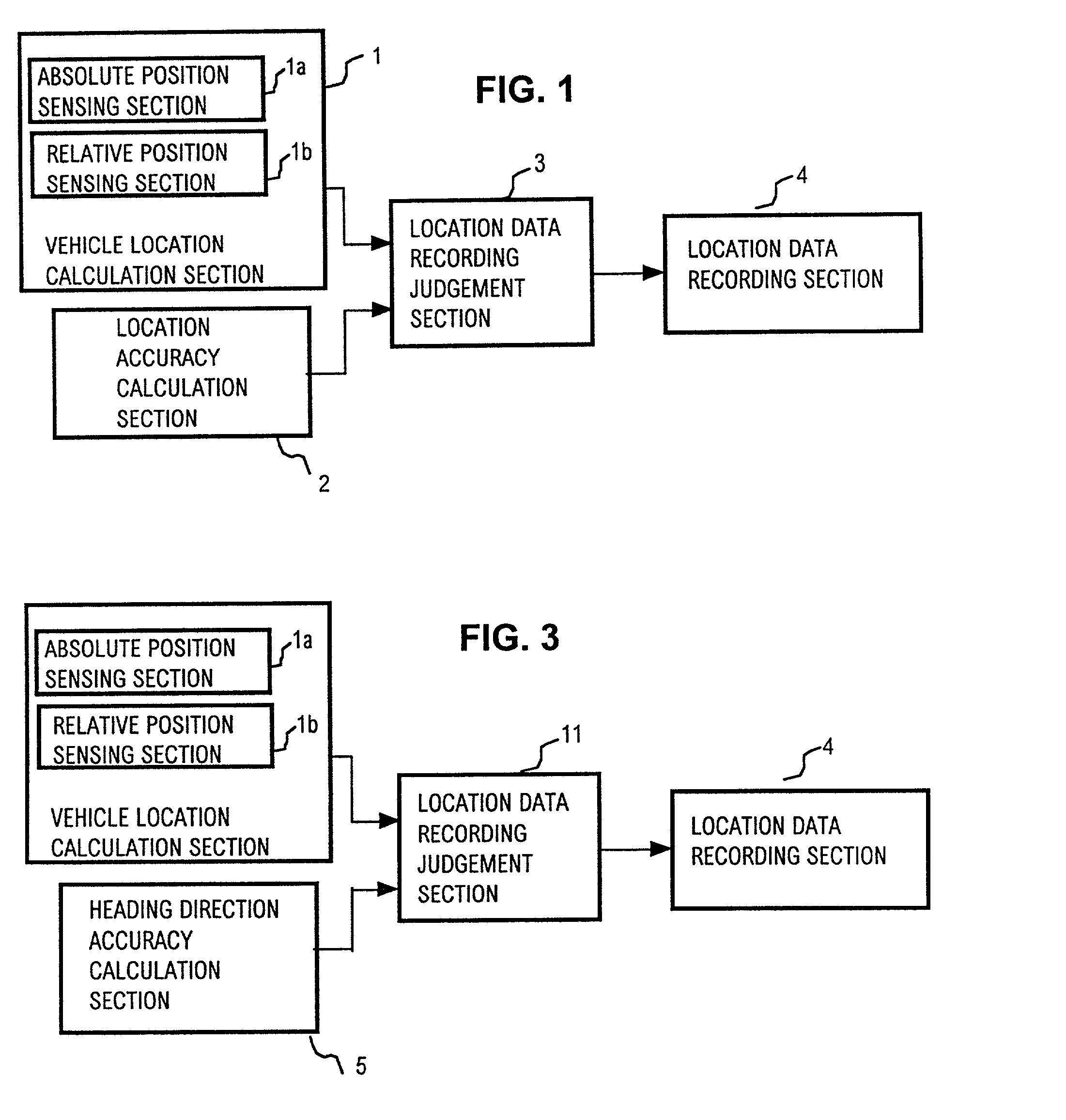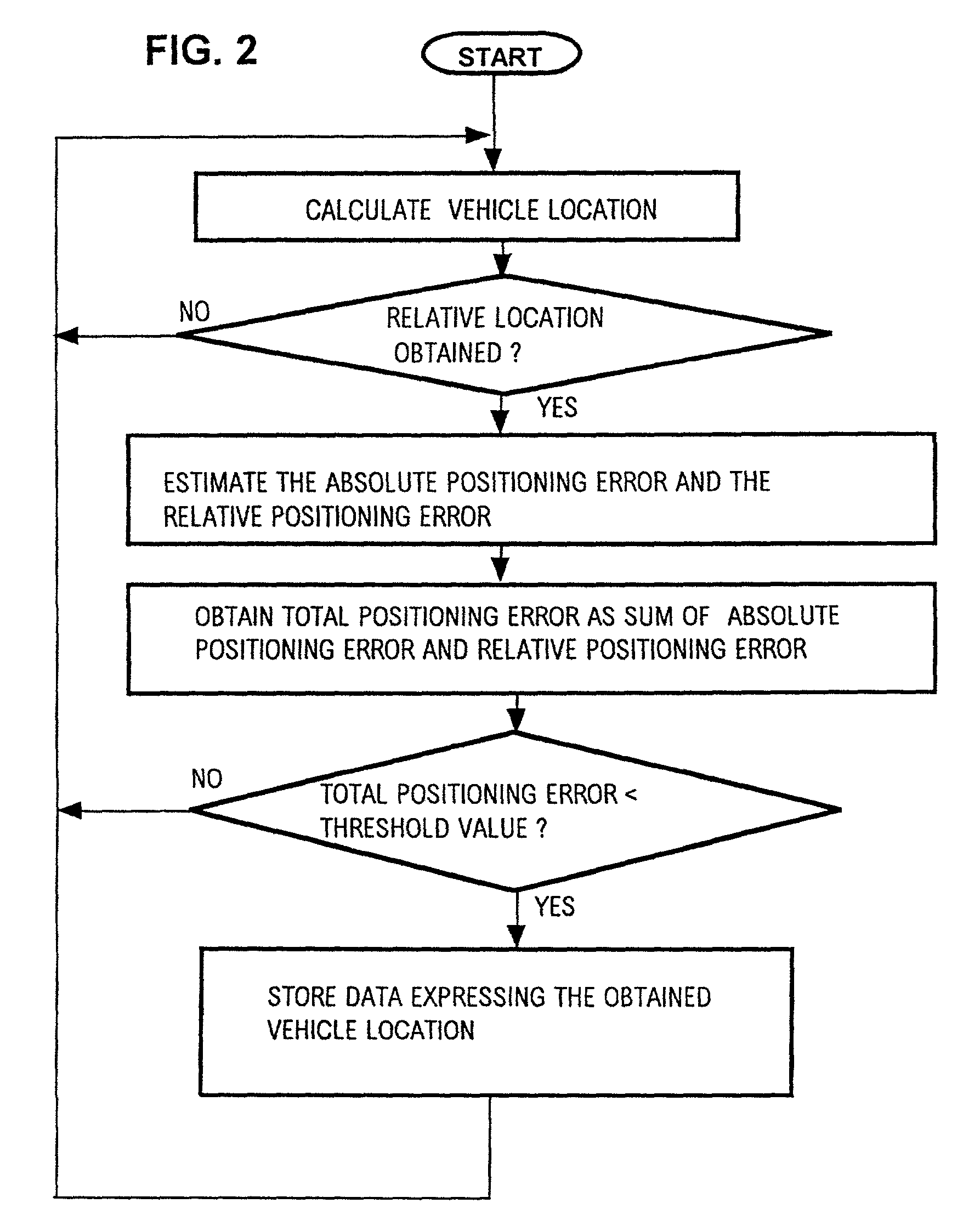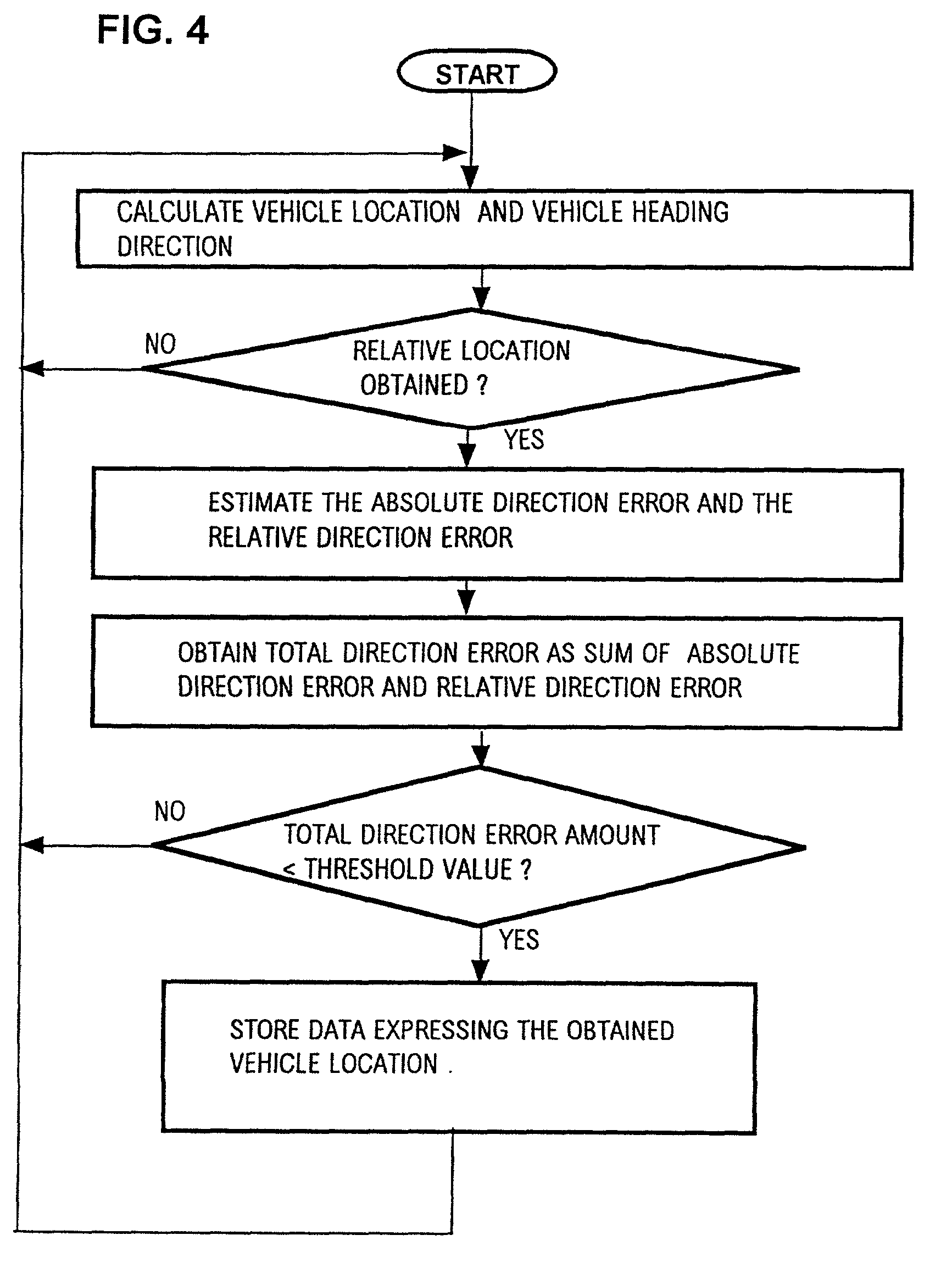Method and apparatus for applying decimation processing to vehicle position data based upon data accuracy estimation
a vehicle position and data accuracy technology, applied in the field of mobile body navigation apparatuses, can solve the problems of insufficient precision of accident site position, excessive time required to notify the necessary information to an emergency vehicle dispatch center, and substantial amount of time required for transmitting the necessary data
- Summary
- Abstract
- Description
- Claims
- Application Information
AI Technical Summary
Benefits of technology
Problems solved by technology
Method used
Image
Examples
first embodiment
[0063] As can be understood from the above, this embodiment can provide similar advantages to those of the first embodiment, by reducing the amount of data expressing inaccurate vehicle position information that will be recorded by the position data recording section 4.
[0064] In the above it is assumed that judgement of amounts of heading direction error, for selecting those vehicle positions that are to be recorded, is applied only to the relative position data, i.e., that all absolute positions are supplied to the recording section 4. However it would be equally possible to also apply such selective judgement to the absolute positions.
[0065] A third embodiment will be described referring to the general system block diagram of FIG. 5 and the corresponding basic flow diagram of FIG. 6. This embodiment essentially differs from the first embodiment in that a navigation satellite number calculation section 6 is utilized in place of the position accuracy calculation section 2 of the fir...
second embodiment
[0085] When a data record is received by the position data transmission judgement section 24, if it is found to have been recorded within a predetermined fixed time interval extending up to the current time point (as described for the preceding embodiment) then the amount of estimated positioning error corresponding to the vehicle position data of that record is compared with a threshold value, in the same manner as described for the position data recording judgement section 11 of the If the positioning error is lower than the threshold value, then the vehicle position data from that record are transferred by the position data transmission judgement section 24 to the position data transmitting section 9, to be converted to a suitable digital signal format and transmitted thereby by radio to an emergency services center.
fifth embodiment
[0086] Thus with this embodiment, data expressing the most recently traversed portion of the route of the motor vehicle can be more rapidly transmitted, in the event of an emergency, than has been possible in the prior art, since the position data transmission judgement section 24 selects for transfer to the position data transmitting section 9 only position data which can be expected to have a sufficient degree of accuracy, as indicated by the amount of estimated error in the heading direction which is calculated when the vehicle position is calculated by the vehicle position calculation section 1. Hence, this embodiment can provide similar advantages to those described for the
[0087] A seventh embodiment will be described referring to the general system block diagram of FIG. 13. The overall flow of processing that is executed with this embodiment is illustrated in the flow diagram of FIG. 14. The embodiment is formed of a vehicle position calculation section 1, a navigation satelli...
PUM
 Login to View More
Login to View More Abstract
Description
Claims
Application Information
 Login to View More
Login to View More - R&D
- Intellectual Property
- Life Sciences
- Materials
- Tech Scout
- Unparalleled Data Quality
- Higher Quality Content
- 60% Fewer Hallucinations
Browse by: Latest US Patents, China's latest patents, Technical Efficacy Thesaurus, Application Domain, Technology Topic, Popular Technical Reports.
© 2025 PatSnap. All rights reserved.Legal|Privacy policy|Modern Slavery Act Transparency Statement|Sitemap|About US| Contact US: help@patsnap.com



